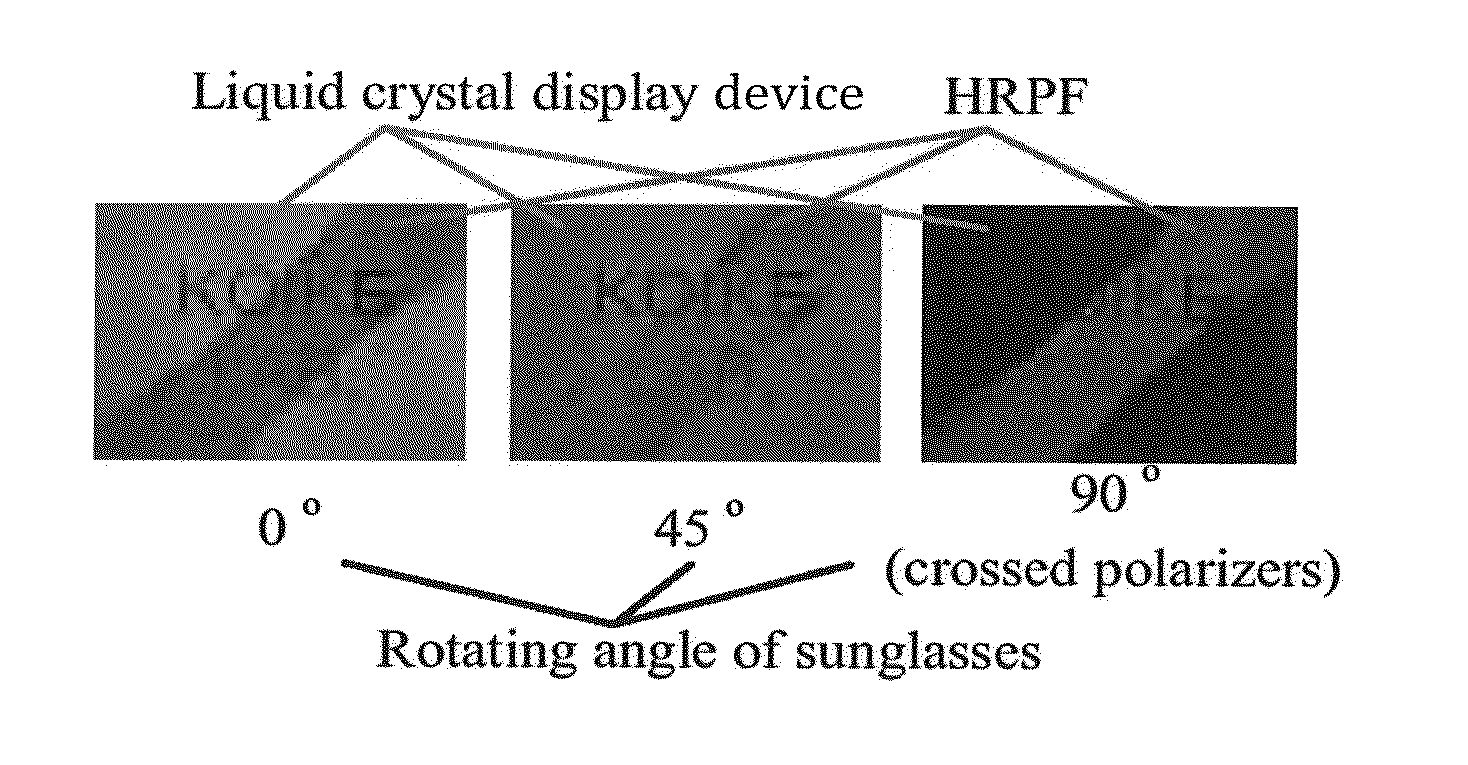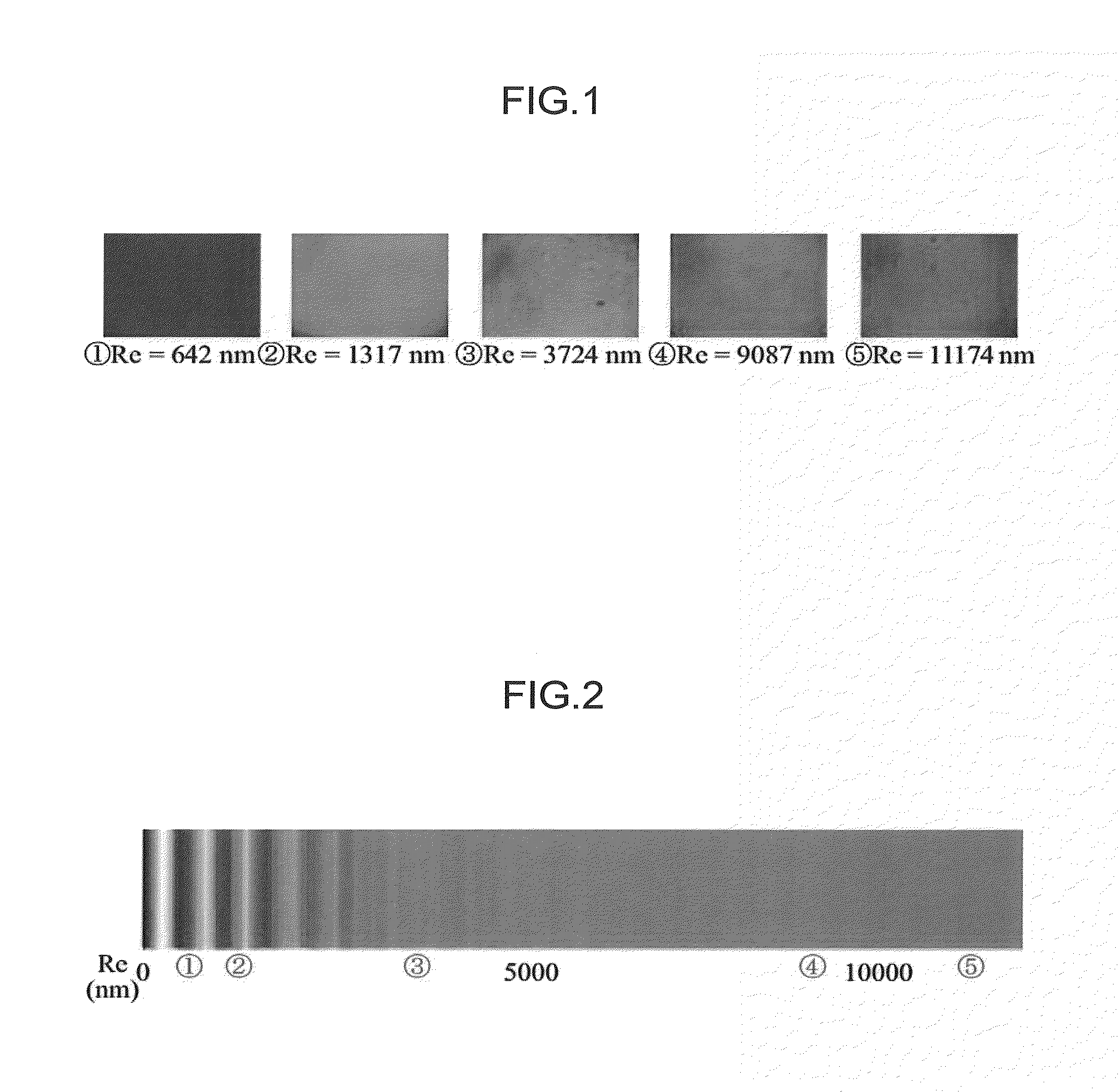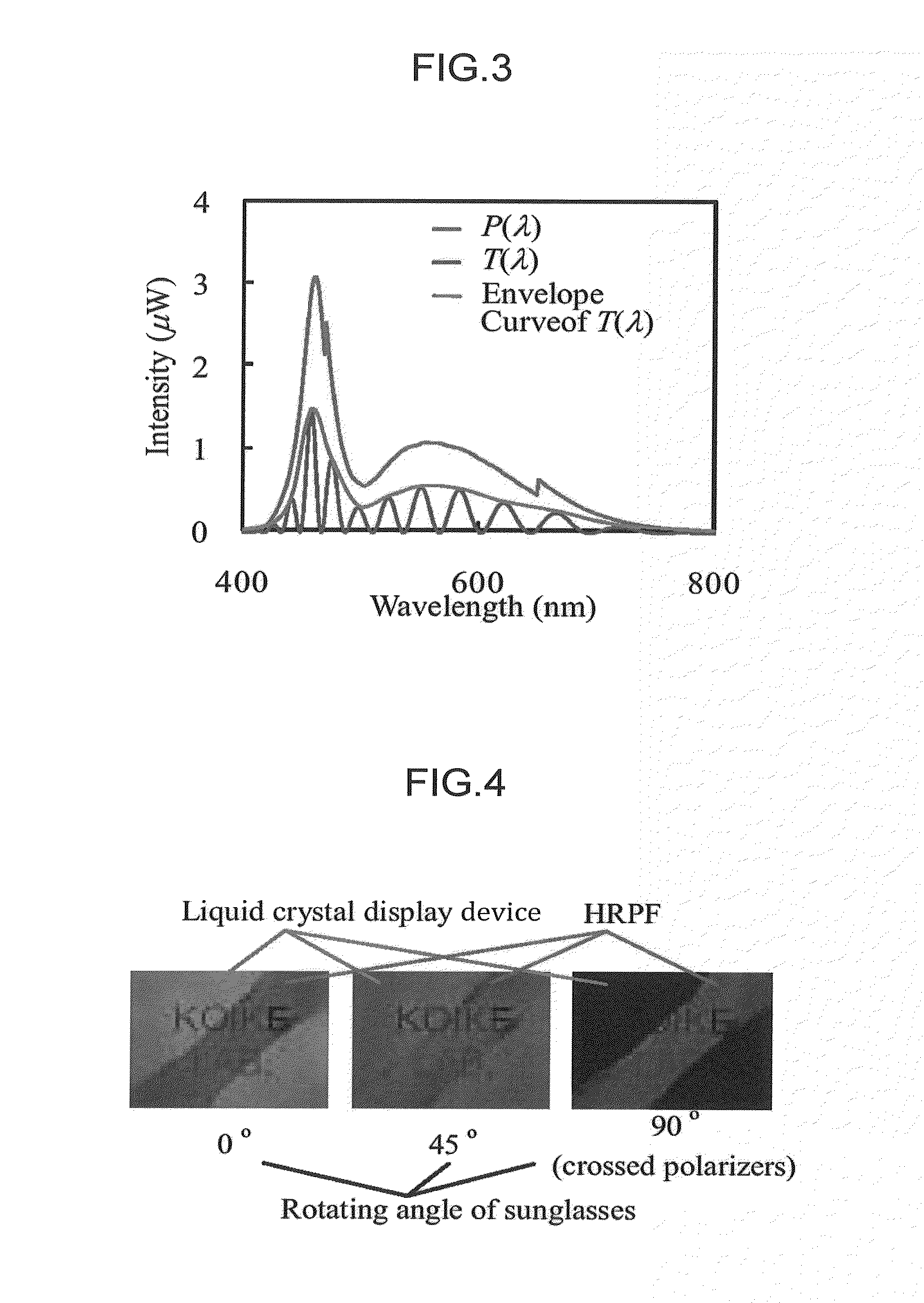Method for improving visibility of liquid crystal display device, and liquid crystal display device using same
a technology of liquid crystal display device and display device, which is applied in the direction of optics, polarising elements, instruments, etc., can solve the problems of white light, inability to view the screen depending, and interfere with itself, and achieve efficient depolarization of linearly polarized light and excellent visibility
- Summary
- Abstract
- Description
- Claims
- Application Information
AI Technical Summary
Benefits of technology
Problems solved by technology
Method used
Image
Examples
experimental example 1
[0053]The following shows an example in which a polycarbonate film was used as the polymer film.
[0054]A polymer solution was prepared by dissolving polycarbonate (available from Aldrich Chemical Co.) into methylene chloride four times by weight. The polymer solution was spread on a flat and smooth glass plate with a knife coater, and was left at room temperature, and the solvent was dried. Then, the polycarbonate sheet was peeled from the glass plate, and was dried at 90° C. in a low-pressure dryer for 24 hours. A sample was cut into a dumbbell shape from the polycarbonate sheet obtained. The cut sheet sample was heated to a temperature of about 160° C. and uniaxially stretched using a tensilon (available from Orientec Co., Ltd.). The stretch ratio and the stretch rate during the stretching were adjusted, thereby obtaining an oriented polycarbonate film having a desired retardation.
[0055]The interference color of the oriented polycarbonate film obtained was observed. As a light sour...
experimental example 2
[0065]The following will show an example in which an oriented polyethylene terephthalate (PET) film was used as the polymer film.
[0066]First, 1,000 parts of dimethyl terephthalate, 700 parts of ethylene glycol, and 0.16 parts of manganese acetate tetrahydrate were put in a transesterification reaction vessel, transesterification reaction was performed at a temperature of from 120° C. to 210° C., and the generated methanol was distilled off. When the transesterification reaction was completed, 0.13 parts of antimony trioxide and 0.017 parts of orthophosphoric acid were added, and the pressure in the system was gradually reduced to 133 Pa for 75 minutes. Simultaneously, the temperature was gradually increased to 280° C. Under these conditions, polycondensation reaction was performed for 70 minutes, and the melted polymer was extruded into water through a discharge nozzle, thereby obtaining a PET resin having an intrinsic viscosity of 0.62 dl / g.
[0067]An unstretched film was produced by...
PUM
| Property | Measurement | Unit |
|---|---|---|
| wavelengths | aaaaa | aaaaa |
| angle | aaaaa | aaaaa |
| angle | aaaaa | aaaaa |
Abstract
Description
Claims
Application Information
 Login to View More
Login to View More - R&D
- Intellectual Property
- Life Sciences
- Materials
- Tech Scout
- Unparalleled Data Quality
- Higher Quality Content
- 60% Fewer Hallucinations
Browse by: Latest US Patents, China's latest patents, Technical Efficacy Thesaurus, Application Domain, Technology Topic, Popular Technical Reports.
© 2025 PatSnap. All rights reserved.Legal|Privacy policy|Modern Slavery Act Transparency Statement|Sitemap|About US| Contact US: help@patsnap.com



